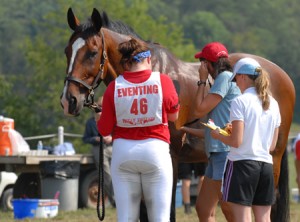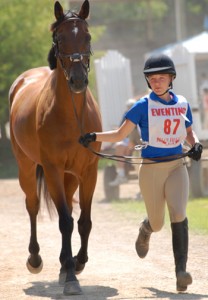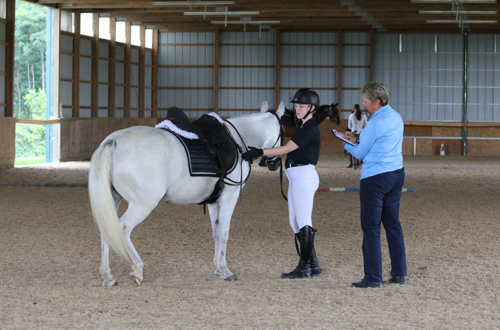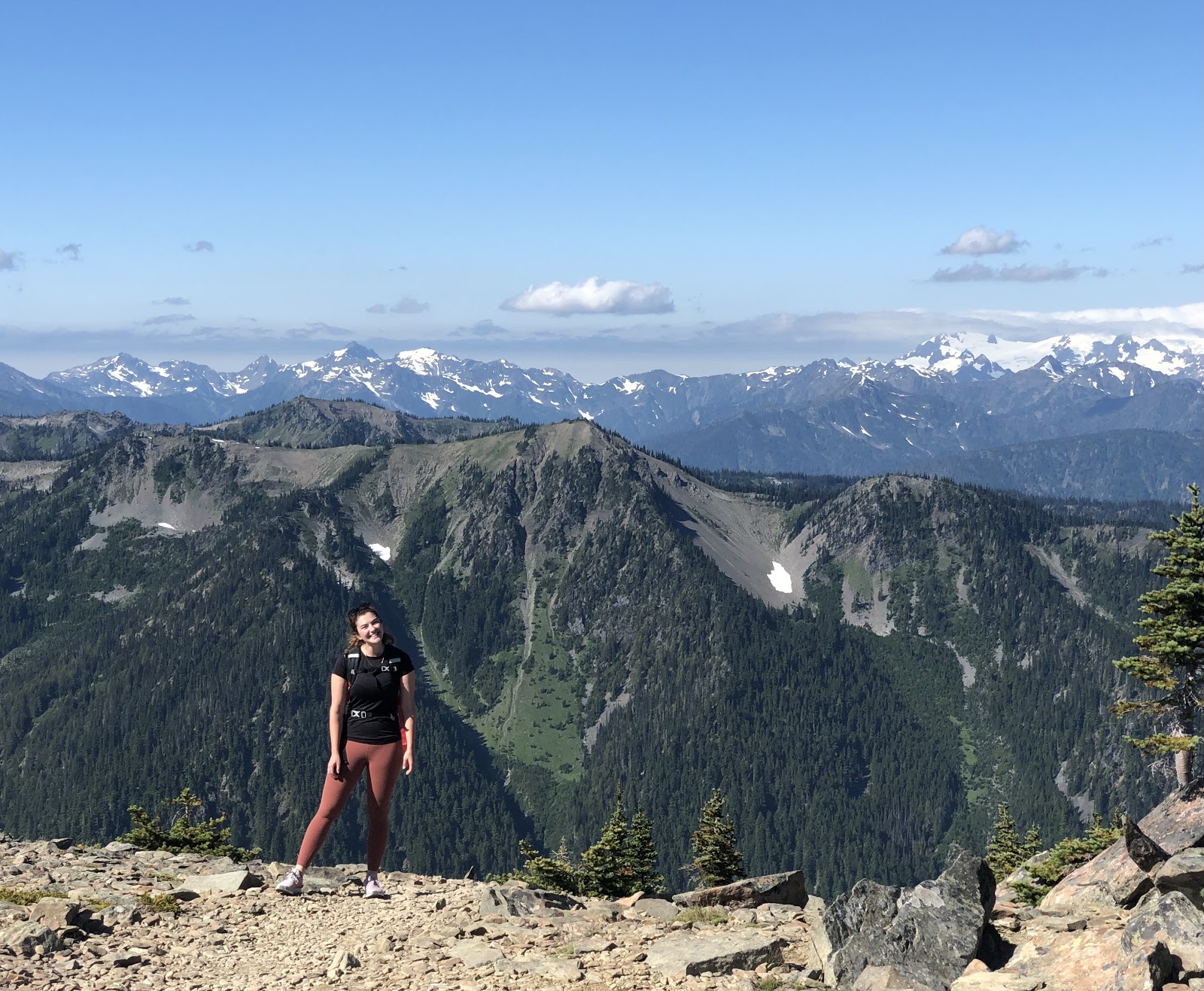The Pre-Purchase Exam- A Primer
Are you buying a horse? Have you ever wondered what goes in to a Pre-Purchase exam (PPE)? We took another opinion poll to get ideas for what horsemen and women, trainers, vets, Pony Club parents and leaders all view as important about their Pre-Purchase exam do’s and don’ts. As with anything equine care related there were a lot of opinions on must have’s and really should nots. The general consensus was mostly the same; if you are a professional looking for an upper level prospect or a training prospect you would probably do a more thorough exam. If you are an amateur or just want a good riding horse, the exam should be more basic, and only become more invasive if small discrepancies are found.

Like most horse care related articles, we recommend you consult with your trainer, vet, and a responsible adult (if you are under the age of 18) before making any decisions.
The list that follows is a list of Pre-Purchase Exam options. We will try to explain each of them in detail.
Most common needs in a PPE:
1) A flexion test– This is simple and very commonly used in PPE’s. The vet will have a handler hold the horse facing down a jogging area (flat and about 100yards long, usually concrete because grass creates uneven ground), they will start usually with the front legs one at a time. They will flex a joint, set a timer for the flex and when they set the leg down ask the handler to jog the horse off. If the horse steps right out of the flexion then they are obviously in great condition. If they take a step or two badly or work out of it slowly it can indicate some arthritis in the joint or some other joint problems. The vet will take note. This is done and noted on each of the horses’ four legs.
2) A basic physical– This includes getting a resting temperature, pulse, and respiratory rate (if you hear your vet say the term Auscultation, they mean they are going to listen to the heart and lungs). It includes an ocular exam (eyes). The vet might also run their hands over the horses’ body, palpating and seeing if the horse shows sensitivity to touch (indicating back or limb pain).
3) A “rebreathing” test– This is where the veterinarian places a bag (sometimes it is a palpation sleeve or even a trash bag) over the horses’ nose and lets them breathe (Carbon dioxide builds). They set a timer and when the time is up they pull the bag off of the horses’ nose and let the horse take in big gulps of air while listening to the lungs with a stethoscope. This helps them listen more thoroughly for potential breathing issues or illnesses (this test can cause a horse to cough or wheeze which would encourage the vet to investigate further).
4) A basic neurological exam– The vet will have the handler walk a horse in tight circles, ask them to do a turn on the haunches and forehand while in hand and sometimes up and down a small hill. The vet will observe how the horse places its feet. They are looking for “proprioception” which is knowing where they are placing their limbs and feet.
Other “extras” and more extensive exams:

5) Blood test/drug test– Some people have blood drawn and run a drug test if they choose to buy the horse. Others choose to go ahead and have the blood run for disease. This is an extra that is becoming more common in PPE’s.
6) Riding exam on hard ground– Some veterinarians want to see the horse ridden under tack and usually on harder ground. They will ask the rider to do simple circles and walk, trot, and canter on a loose rein. This allows them to see how the horse handles the weight of the rider and can be used along with a flexion test before deciding which x-rays to do.
7) Ovary palpation (mares only)– This is more and more common as an exam to see if the horse is also breeding sound or if she has any issues that might cause her to react painfully to everyday work.
8) Scoping– When a horse is scoped an Endoscope, which is a small camera attached to a thin long flexible hose, is passed through the horses nose, past the soft palate, and down the esophagus. The vet is looking for normal function and reaction when palpated. They are also looking to see if the horses’ soft palate lays where it should. If a horse displaces or has a paralyzed soft palate it can interfere with the way he breathes when running. This is where the term “roaring” comes from. It can be tough for a race horse or eventer to run at top speeds if this happens because they aren’t getting enough oxygen. For most disciplines that are not speed related, this is not an issue, merely something to be aware of.
9) A dental exam– This will let you know if the horse is in general good health.
After the regular (and possible “extra”) exam:
10) X-rays– some people feel that you should x-ray all four feet and all major joints no matter what the flexion tests say. Some people wait to see what the flexion tests recommend. X-rays are charged per shot, so they are a more expensive extra in exams, but can help understand if a horse has a simple abscess (nothing more than a nuisance when it happens) or has coffin rotation that could be career ending.
Other suggestions:
A) One person shared how important it is to take a knowledgeable person with you who can be there for the initial look at the horse and if possible for the vet exam. This can be your trainer or a horseperson you trust, but even accomplished horsemen often look at horses with another person to act as their extra set of eyes.
B) Always research the veterinarian you are going to use if the horse is far away from your home vet. Have your home vet consult with the person you are using for the Pre-Purchase if it is in another state.
C) Make sure the vet doing the PPE knows your desired discipline or purpose for the horse. It will help them take a more educated approach to the exam itself and search for things that might affect the horse and the use he is intended. A good veterinarian will not “pass or fail” a horse, they will give you all of the pros and cons of the horse for his intended use.
For more information refer to Chapter 9 in the USPC Manual of Horsemanship Basics for Beginners- D Level, 2nd edition or Chapter 6 in the USPC Manual of Horsemanship Intermediate Level-C-1 and C-2, 2nd edition.



